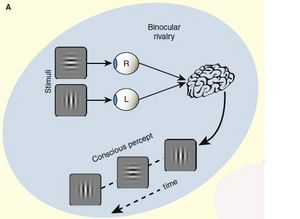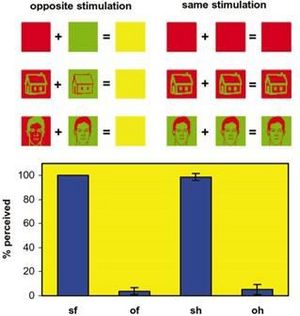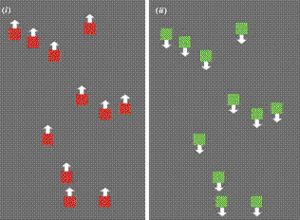
Binocular competition: when two different stimuli are presented in the same area of the visual field, one in each eye, the brain induces a series of stochastic perceptual alternations, during which we see one stimulus and then the other. This psychophysical phenomenon has been widely used as a tool for studying the relationship between brain activation and visual consciousness. In our laboratory, we examine whether the phenomenon is due to competition between the eyes (in early stages of visual processing) or between stimuli (in higher stages), whether it is attributable to adaptation mechanisms, and to what extent it can be influenced or explained by the cognitive function of attention.

“Invisible” stimuli: The cognitive function of perception is usually intertwined with the cognitive function of consciousness. However, there are cases where perception is incomplete, in the sense that the results of the processing of a visual stimulus by the brain do not reach the level of consciousness. In our laboratory, we use various psychophysical methods with which we can “disappear” a visual stimulus from the subject’s perception. Using these methods, we can study the processing of non-conscious information by the brain. One way is to examine the phenomena of adaptation in the brain, which are detectable by the perceptual aftereffects they cause. By eliminating the adaptation stimulus from perception, we can investigate whether the aftereffects depend on the physical presence or perception of the stimulus, thus separating the processing of visual information into conscious and unconscious stages.

Perceptual asynchrony: the processing of different features of visual information, such as color and motion, takes place in different areas of the brain, resulting in different times for each feature to be perceived. With the appropriate experimental manipulations, we can create temporal optical illusions, in which the visual features of an object are perceived in a way that differs from reality. In this way, we can study the properties of the processing of each feature